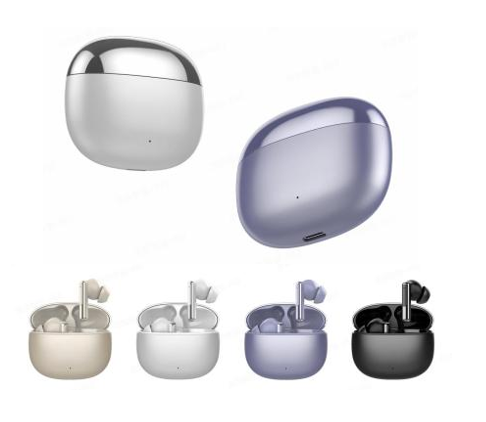Smart Earphones: How AI Technology is Changing the Audio Product Market
6/29/20255 min read


The Evolution of Earphones: From Basic to Smart
The journey of earphones has witnessed significant advancements, transitioning from rudimentary audio devices to the sophisticated smart earphones available today. Initially, earphones emerged as simple, wired devices that offered basic sound reproduction. These early models primarily catered to functionality without incorporating any advanced technological features. The focus was on providing users with the ability to listen to audio content, albeit with limited sound quality and no additional functionalities.
The introduction of wireless technology marked a pivotal moment in the evolution of earphones. The first Bluetooth-enabled models began to surface in the early 2000s, allowing users to enjoy music without being tethered by cords. This convenient attribute addressed the increasing consumer demand for freedom of movement, ushering in a new era of portability and ease of use. As the years progressed, advancements in battery life and connectivity further enhanced the wireless experience, making earphones more accessible and appealing to a broader audience.
As users became more discerning about their audio quality and overall listening experience, manufacturers began incorporating smart features into their earphones. The integration of voice recognition technology revolutionized the way users interacted with audio devices. Instead of relying solely on physical controls, consumers could now issue voice commands to manage their audio settings seamlessly. Additionally, innovations such as adaptive noise cancellation emerged, allowing for an immersive listening experience by intelligently filtering out ambient noise. These advancements in smart technology reflected a growing consumer appetite for enhanced audio experiences that cater to individual preferences and lifestyles.
Today, the audio product market is defined by smart earphones that combine cutting-edge technology with user-centric features. As artificial intelligence continues to evolve, it is likely that future earphones will offer even more personalized enhancements, further transforming the way we experience sound. The historical trajectory of earphones illustrates that consumer needs and technological advancements are closely intertwined, driving innovation and shaping the future of audio products.
The Role of AI in Enhancing Audio Experience
Artificial Intelligence (AI) has fundamentally transformed the audio product market, particularly through the development of smart earphones. These devices now incorporate sophisticated AI algorithms to tailor sound experiences uniquely suited to individual preferences. One of the most notable features is personalized sound adjustments. By analyzing user listening habits and preferences, smart earphones can automatically modify equalization settings to deliver a sound profile that resonates with the listener. This personalization ensures that each user enjoys their music, podcasts, or audiobooks to the fullest extent, enhancing their overall audio experience.
Adaptive noise cancellation is another significant advancement due to AI technology. Traditional noise-canceling headphones function with a fixed approach, but smart earphones leverage AI to continuously monitor and adjust noise cancellation based on the surrounding environment. By utilizing real-time data, these earphones can dynamically alter the levels of noise cancellation in response to fluctuating background noise, ensuring an uninterrupted audio experience for the user. This means that whether one is in a bustling café or a quiet library, the smart earphones can adapt seamlessly, allowing listeners to engage fully with their audio content.
Furthermore, voice assistance integrated into smart earphones exemplifies how AI enhances user interaction. Voice-activated technologies enable hands-free functionality, allowing users to manage calls, control music playback, or even access information without pressing any buttons. The AI's ability to understand natural language commands significantly contributes to the user experience, making it more intuitive and accessible. This aspect promotes a seamless interaction between the user and the device, thereby fostering a more immersive audio experience.
Overall, the incorporation of AI into smart earphones exemplifies a significant shift towards customization and adaptability in the audio product market, making it increasingly user-friendly and responsive to individual needs.
Market Trends and Consumer Insights
The market for smart earphones has witnessed substantial growth in recent years, driven by the increasing demand for advanced audio technologies. According to a recent industry report, the global revenue for smart audio devices is projected to surpass $10 billion by 2026, with smart earphones constituting a significant portion of this market. Prominent brands such as Apple, Sony, and Bose have emerged as leaders, each leveraging their strengths in audio quality and innovative features to capture consumer interest.
One of the key factors driving consumer choices in the smart earphone market is the integration of artificial intelligence (AI) technology. Research indicates that consumers are gravitating towards devices equipped with AI capabilities, as they offer enhanced user experiences, such as adaptive sound adjustments and personalized audio settings. The ability of smart earphones to recognize user preferences and provide real-time adjustments based on environmental factors showcases the transformative impact of AI in audio products. Furthermore, intelligent voice assistant functionality has become a standard expectation for many consumers, further influencing purchasing decisions.
Additionally, consumers exhibit a growing preference for products that emphasize health and wellness. Features such as noise cancellation, hearing health monitoring, and fitness tracking have become increasingly popular, as individuals seek to enhance their auditory experiences while maintaining their physical well-being. The rise of remote working and online learning has also contributed to the burgeoning interest in smart earphones, as individuals look for quality audio solutions that cater to virtual communication needs.
Looking ahead, the smart earphones market is expected to continue its upward trajectory, with an annual growth rate of around 15% projected over the next five years. As technology evolves and consumer preferences shift towards more connected and intelligent audio solutions, understanding these market trends and consumer insights will be crucial for brands aiming to thrive in this dynamic landscape.
Future Perspectives: What’s Next for Smart Earphones?
The innovation landscape for smart earphones is rapidly evolving, driven primarily by advancements in artificial intelligence technology. As we look to the future, several emerging trends are expected to redefine the audio product market. One of the most promising developments is the integration of health monitoring features into smart earphones. With AI's capability to process and analyze biometric data, future devices may not only serve as audio assistants but also function as personal health aides. This could include features such as heart rate monitoring, stress level assessments, and even sleep analysis, providing users with valuable insights into their overall well-being.
Another significant trend is the improved integration of smart earphones with other devices. The rise of IoT (Internet of Things) technology means that audio products could seamlessly connect with smartphones, smart home systems, and wearables. This interconnected ecosystem will enhance user experience, enabling functionalities like voice-activated controls and context-aware interactions, which will streamline daily activities. As a result, smart earphones will likely become central hubs for managing various devices, making life more convenient and efficient.
Furthermore, advancements in sound quality are also anticipated to shape the future of smart earphones. AI-driven audio technologies, such as adaptive sound equalization and noise cancellation, are expected to achieve newer heights of acoustic performance. This could result in earbuds that adjust audio settings based on the user’s environment, ensuring optimal sound experience regardless of external noise. Enhanced 3D audio capabilities may also be on the horizon, creating immersive listening experiences that mimic real-world acoustics.
In summarizing these prospective developments, the future of smart earphones looks promising, with continuous innovations set to enhance functionality and elevate user experience. As AI technology continues to advance, consumers can anticipate a new era of audio products, transforming listening experiences in unprecedented ways.
